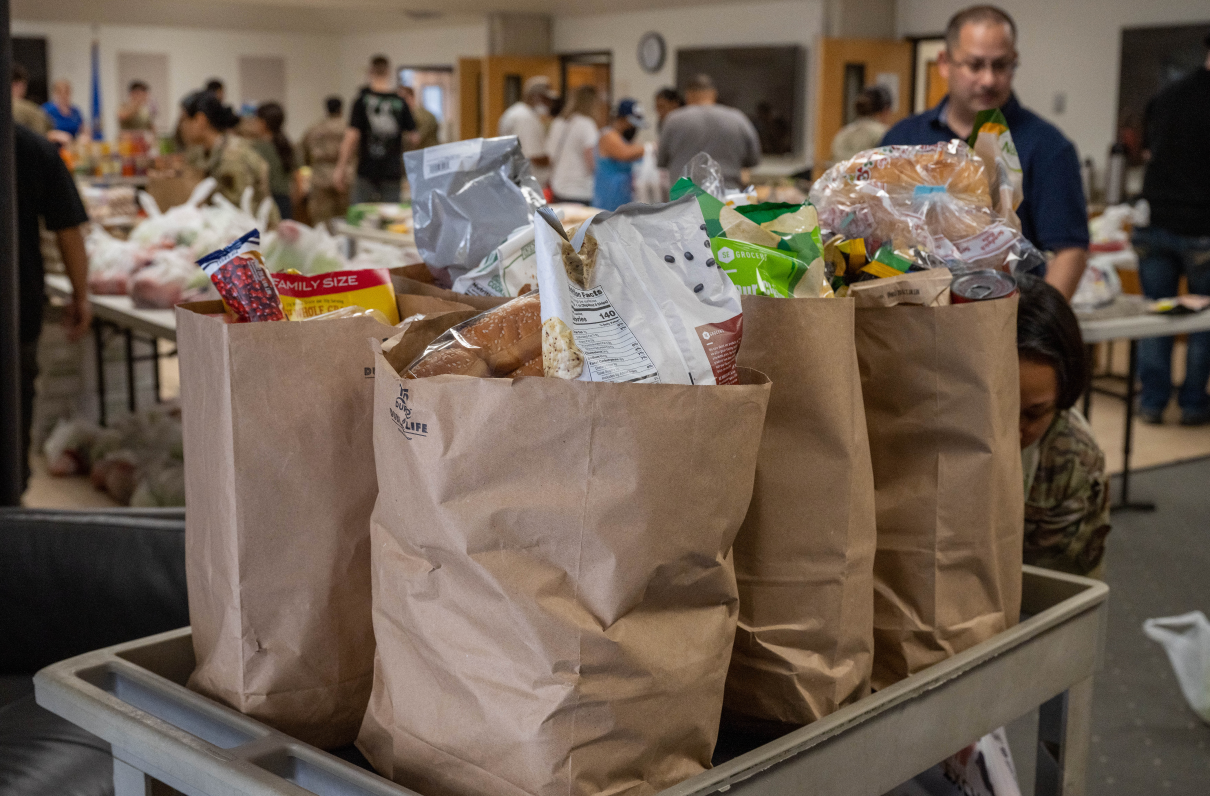From nonprofit surveys to RAND reports to DoD’s own survey of active duty military spouses, the data consistently shows that junior enlisted families continue to face food insecurity. While thousands of servicemembers fall into this group, the current “fix” from DoD reaches only a few dozen.
On the surface, the infrastructure in place to address this problem seems robust. With a nudge from Congress, the Pentagon issued a plan to strengthen food security in the military which includes six lines of effort:
- Increase access to healthy food
- Enhance spouse economic opportunities
- Review servicemember pay and benefits
- Reinforce financial resources and awareness
- Encourage servicemembers and families to seek available resources and services
- Expand data collection and reporting
[TAKE ACTION: Ask Lawmakers to Co-Sponsor the Military Spouse Hiring Act]
The FY 2022 National Defense Authorization Act (NDAA) authorized a Basic Needs Allowance (BNA) for military families with a gross household income (GHI) less than 130% of federal poverty guidelines. Because GHI calculation includes the Basic Allowance for Housing (BAH), very few families were eligible for the support.
Noting this, the FY 2023 NDAA expanded the threshold to military families whose GHI fell below 150% of federal poverty guidelines. This change added roughly 2,500 more potentially eligible recipients, according to DoD, which falls significantly short of the estimated 24% to 27% of families facing food insecurity.
But even that limited number of potential beneficiaries would improve upon the actual impact of the program to date: In a recent briefing, a senior DoD official reported approximately 70 families are receiving BNA.
The average family profile for recipients was an E-4 with seven dependents. Of more than 371,000 military families, approximately 14,350 have more than four dependents (as of March 2024). While we don’t have a breakdown by rank, one could assume few E-4s in the force are likely to have seven dependents.
[RELATED: MOAA Part of Public Workshop Informing Key Study of DoD Autism Care]
Many believe the issue goes beyond simply giving military families more money. MOAA agrees. We support efforts to expand access to healthy food through extended hours at chow halls and increased savings at commissaries, but undoubtedly, more work remains to improve BNA before the pilot program sunsets.
The House version of the FY 2025 NDAA includes a provision to further expand the BNA threshold to 200% of federal poverty guidelines. It also includes a provision to study the Basic Allowance for Subsistence to determine whether family size should be considered in its calculation. These are positive steps toward getting military families the financial help they need.
Supporting Families on the Move
One family-welfare factor that continues to warrant attention is the financial stress caused by military-mandated moves. Imagine an E-5 with a spouse and two children stationed in North Carolina who receives orders to Southern California: While the military covers most moving expenses, the family may face out-of-pocket costs for things such as new tires, pet fees at hotels, and so on.
When they arrive in California, reimbursement for covered costs could take two to four weeks … and their BAH doesn’t cover the full cost of housing.
[ACT NOW: Urge Lawmakers to Support BAH Restoration]
Bottom line: Congress and DoD need to focus on solutions that effectively address these quality-of-life issues that affect the financial well-being of our force.
Support Military Spouses
Donate to The MOAA Foundation and support MOAA’s efforts to help military spouses in their career journeys.

